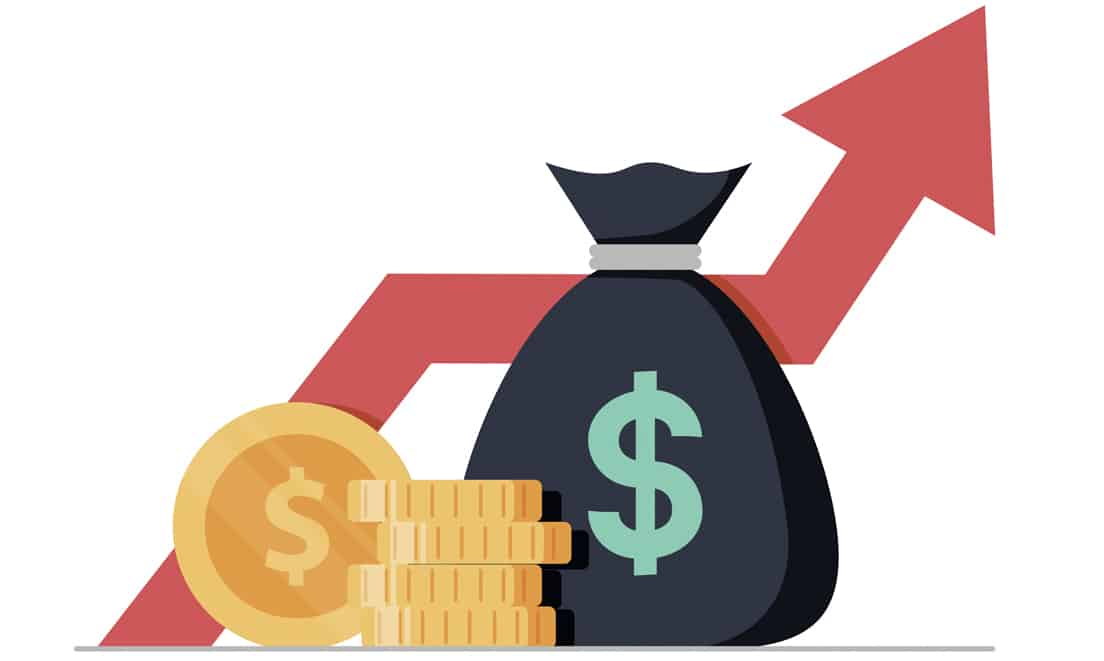what is straight loan?
2022.06.16 14:58
Definition of Straight Loan
(=straight line amortization = interest only loan = term mortgage loan)
The straight-line amortization calculation is a simple method of debt repayment. It is sometimes called a constant amortization method because the portion that applies to the principal remains constant with each payment, points out Financer.com. The interest amount varies according to the outstanding loan balance. This means that the installment payments also change, and higher installment payments occur at the beginning of the loan. Gradually the amount of each installment payment reduces because the interest applies to a lower outstanding balance. The straight-line method is not complicated, and borrowers can use the simple calculation to assign fixed periodic payments to mortgage balances. A loan in which only interest is paid during the term of the loan, with the entire principal amount due with the final interest payment. The interest amount varies according to the outstanding loan balance. This means that the installment payments also change, and higher installment payments occur at the beginning of the loan. In a term or straight loan, the payments made only include interest. In other words, it is nonamortized, which means none of the money paid went towards the principal. Making payments can be done on a periodic basis, such as monthly, quarterly or annually. Term loans are usually short-term, such as three to five years in duration. At the end of a term loan the borrower either has to refinance, which was most common. Of course, the borrower could also sell the property to pay the balance owed. Historically, straight loans were simply refinanced with the original or a new lender. However, once the Great Depression hit, borrowers were unable to repay the principal when due. Since the money supply was also minimal during this time, lenders were unable to roll these term loans over and ended up foreclosing on the property. Over a million families lost their homes as a cause.
Example of a straight loan
straight loan of $10,000, at a 5.0% rate, over a 10 year term
($10,000 x 5.0%) = $500/year in interest
$500/12 months = $41.67/month, interest only payment
Advantages
Straight-line amortization offers a quicker reduction in the outstanding balance; so it suits borrowers who dislike bearing debts. Lenders sometimes prefer this method because it ensures quicker recovery of interest income. The mortgage-style method offers the benefit of constant flat payments, which makes budget planning easier. Both methods allow for more of a tax shield in the beginning of the loan because the borrower initially pays a higher amount of interest.
Disadvantages
Initially, the straight-line method might be difficult for borrowers to manage because income typically increases over the years, and this method requires larger payments at the onset of the loan when borrowers’ incomes may be lowest. Also, the constant change in payment commitments might make it difficult to manage budgets. The mortgage-style amortization also has its shortcomings; borrowers pay the bulk of the interest up front, and it takes a longer time to reduce principal balances.
Comment 0
| No. | Subject | Date |
|---|---|---|
| Notice | Mortgage Home Loan License NMLS# 1681851 | 2021.10.07 |
| 68 |
the insurance and real estate industries affected by the national and global economy
| 2024.01.05 |
| 67 |
Mortgage MLO License (Mortgage Loan Originator License)
| 2023.12.14 |
| 66 |
Money system works like a game of musical chairs.
| 2022.09.07 |
| » |
what is straight loan?
| 2022.06.16 |
| 64 |
Title Theory, Lien Theory, Intermediate Theory
| 2022.05.10 |
| 63 |
Happy New Year 2022
| 2021.12.29 |
| 62 |
Happy New Year 2022
| 2021.12.29 |
| 61 |
Happy New Year 2022
| 2021.12.29 |
| 60 |
Happy New Year 2022
| 2021.12.29 |
| 59 |
Happy New Year 2022
| 2021.12.29 |
| 58 |
Merry Christmas
| 2021.12.16 |
| 57 |
Merry Christmas
| 2021.12.16 |
| 56 |
Buying a Home After Bankruptcy / Foreclosure / Loan Modification
| 2021.12.07 |
| 55 |
Home Improvement Programs from FNMA & FHA
| 2021.12.03 |
| 54 |
RE Agents may sell more homes
| 2021.12.03 |
| 53 |
FICO Store Matters
| 2021.12.03 |
| 52 |
Loan Programs Overview
| 2021.12.03 |
| 51 |
Payment Scenarios
| 2021.12.03 |
| 50 |
Happy Holidays
| 2021.11.28 |
| 49 |
Happy Holidays
| 2021.11.28 |


